Something New
This was a publicly accessible event and as such if you find yourself in these pictures and would like to be blurred out, please reach out to me via email or social media (Check my About page)
If you wanna get to the Minister's speech, press here.
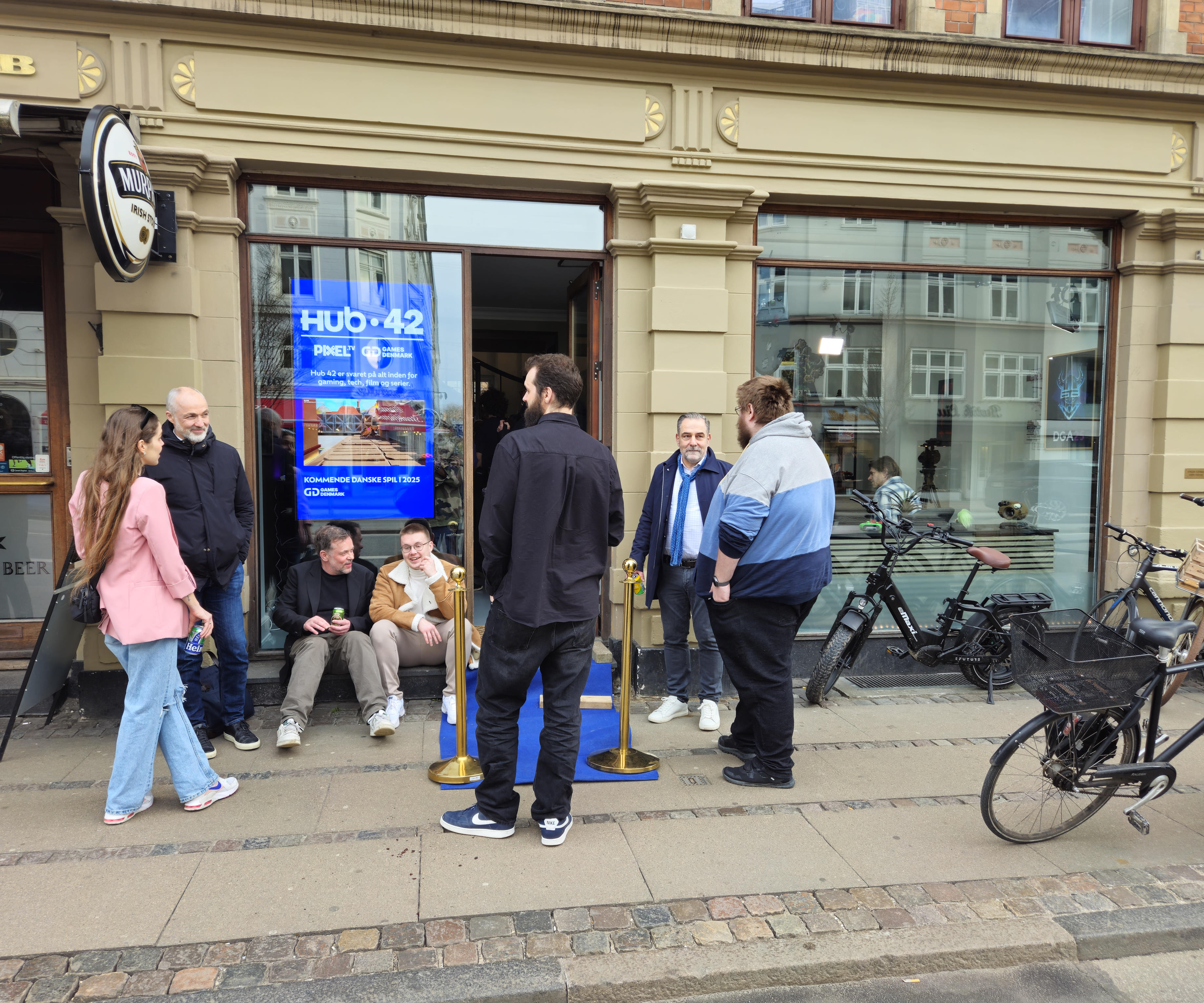
I swung by the Hub42 building today in the heart of Copenhagen to see what kind of place it was and to hear some words from our Minister of Digitisation Caroline Stage. Hub42 was originally supposed to be a window into the Danish games world with streaming, interviews and panels and has become a bit of a literal window into the gaming world as you are met with cameras and studio lights as soon as you step inside.
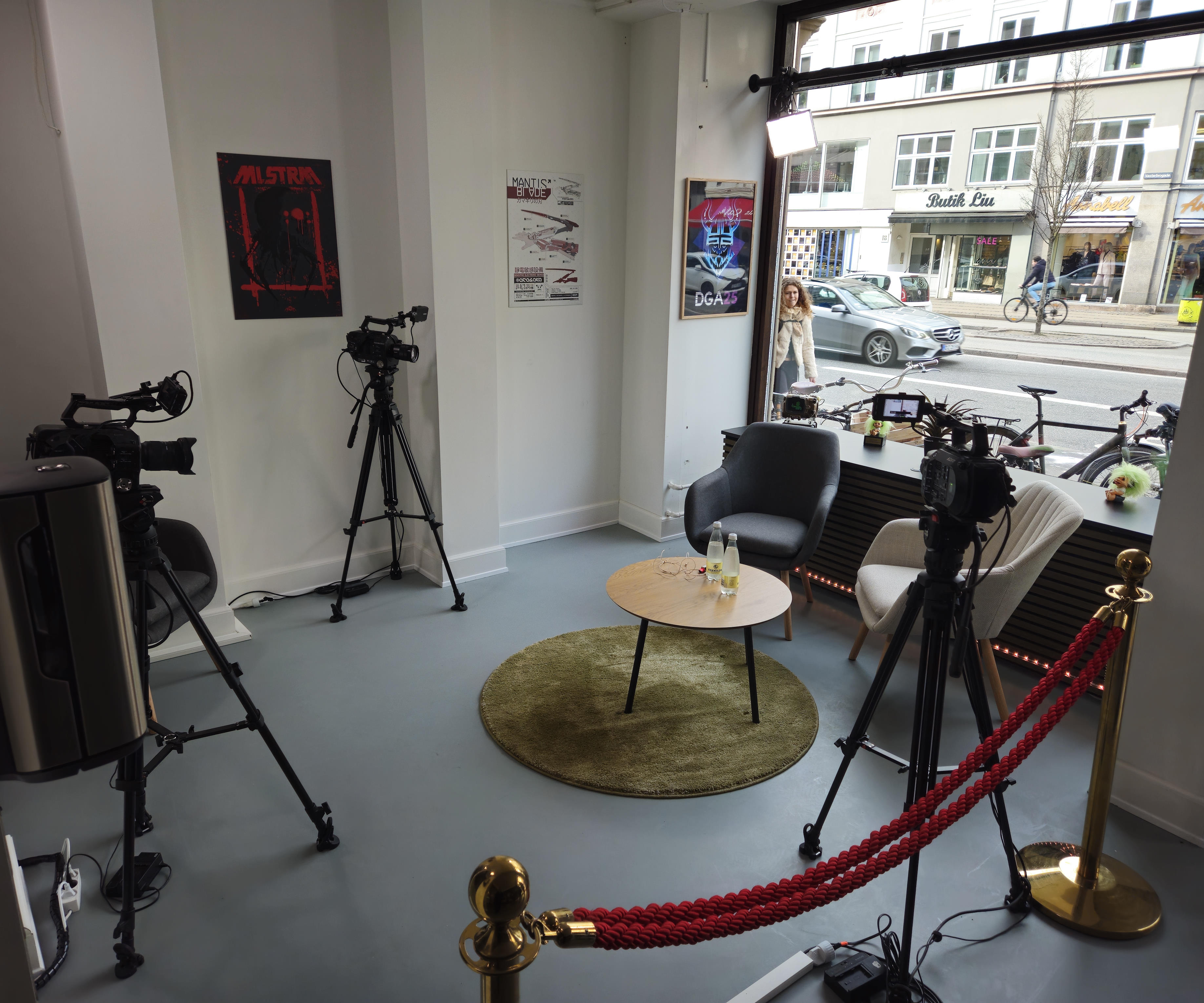
As I walk in further there are already people, computer screens with games you can play and various gamer knick knacks on shelves, tables and in windows.

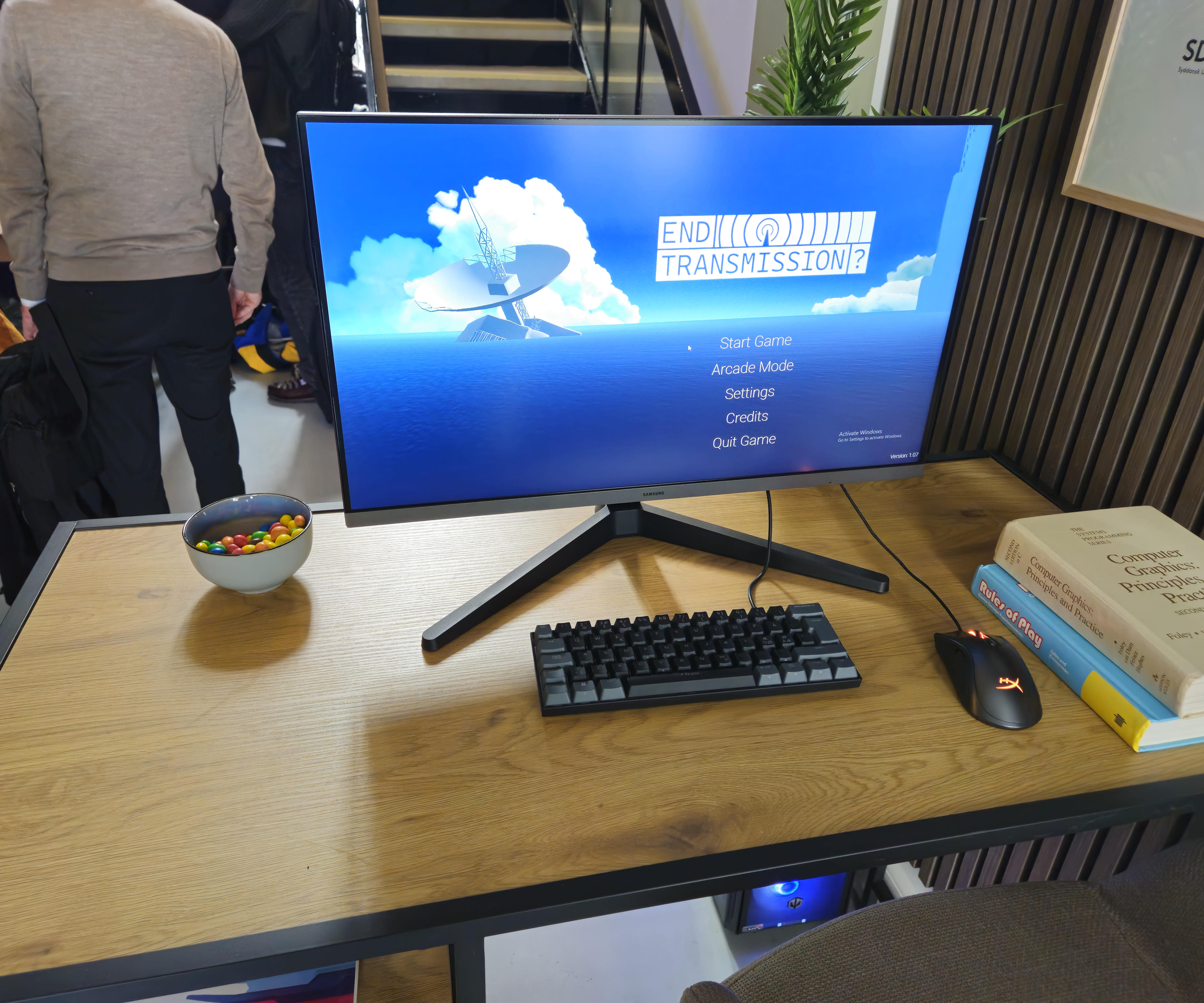
Today's event had a lot of industry people from various games companies in Denmark big and small, as well as the Executive Director for Games Denmark and CEO of Danish Game Company Invisible Walls, Niels A. Wetterberg. Hub42 offerred champagne, sodas and cupcakes as and had a massive screen in the main room running promotional material for various Danish made games from the recent Tommorow's Awesome Games (TAGS) event in Bella Centeret. The atmosphere was ripe with suspense as Niels gets up on a chair to say welcome to everyone and announce that the Minister of Digitsation was just about to arrive.
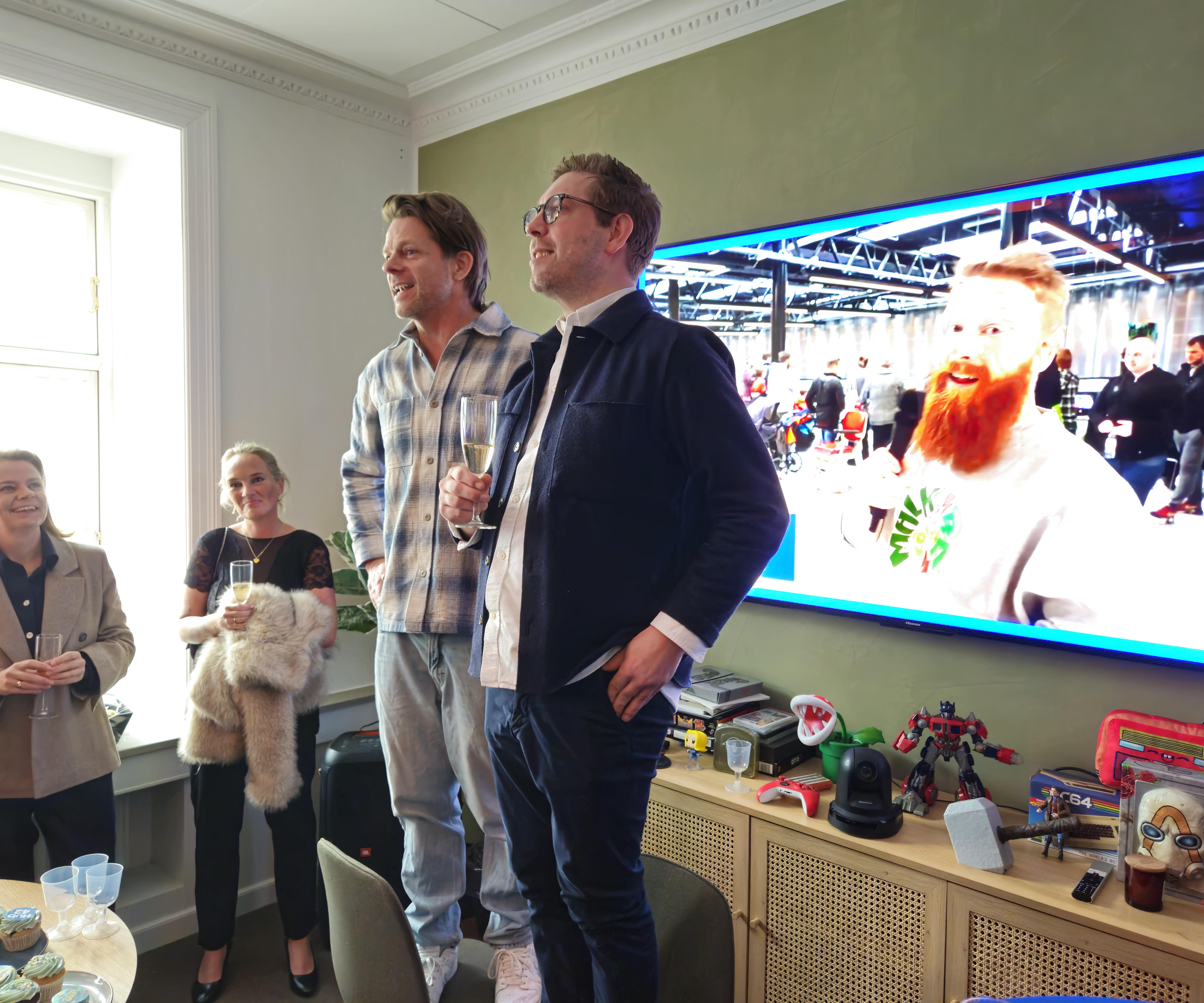
Minister of Digitisation
I was there when Caroline Stage was about to deliver her speech and the room went quiet. I have recorded the speech she was giving while I was at the back of the room, to transcribe it when I got around to writing this. A lot of her speech surrounded screentime and how the debate in Denmark is very black and white when it comes to that topic. Some screen time is alright, some of it is not so great, but we often don't have that nuance in the public discourse. Either all screentime is good or all screentime is bad. While she delivered the speech in Danish, I have translated the full speech below in English. The full Danish speech can be found at the bottom:
It's difficult to quantify screen time in itself. There is some screen time that is good screen time, and there is some screen time that is bad screen time. This is something I have talked a lot about in my first months as a minister, so I’m also happy to be here to talk about screen time that is, hopefully, a little better.
This is quite different from when I was a child, going to FONA to buy the next computer game, which I could take home and play. If we go back to the 90s, I'm from 1990, or the early 2000s, you would definitely find the old, traditional PC. Fortunately, it still exists in many gaming households, including mine, where my stepson uses one. Back then, you would take your brand-new game from FONA, sit down in the office chair in front of the screen, and with a magical click on the desktop computer, Windows would appear, the CD-ROM drive would pop out, you’d insert the game, and then you were ready to play. Some of these things still exist in many games today, I know they do for my stepson. But most games now come online and are downloaded rather than inserted via a CD-ROM.
Back then, there was also a more natural limitation on when and how much you could play computer games. It was hard to play when you left your desktop computer. And if we go even further back to the modem era, playing too long meant taking up the phone line from your parents, definitely a way to create a bad mood at home. Then came the GameBoy, I had one too, and I actually still have it at home, the old-fashioned one. Suddenly, you could play anywhere, so cool.
Today, the GameBoy has been replaced by smartphones and iPads, which contain unlimited amounts of both good and bad games that we can play everywhere. I think many of us have immersed ourselves in mobile games, I know I have. I’ve even been very open about it in Politikken. I’ve played an insane amount of Subway Surfers, a brilliant game, in my opinion. I’ve also played CandyCrush way too much, and that went a bit overboard. I wouldn’t call it a great game, it took over. But games can be both good and bad.
With the technological development we’ve experienced, our screen usage and screen time have increased significantly, maybe even more than we would like, at least in some cases. Children and young people, in particular, spend an enormous amount of time in front of screens, so it’s important to focus on what they are exposed to. Because, as we said in the beginning, not all screen time is necessarily bad screen time. Some studies show that increased screen use can have negative effects. Other studies indicate that it's not about the screen time itself but about what we consume. One of the latest studies I’ve seen points to 31% of teenage girls showing signs of addiction related to what they watch on social media.
Right now, we have a very black-and-white debate about screen time, screen or no screen. And to be fair, I’ve contributed to that myself. But I hope we can have a conversation about what is good screen time and what is bad screen time. That’s where you come in. We owe our children a digital life where they have the freedom to choose, where they are not controlled by screens, but by their own curiosity and desire to play and learn. While it’s easy to say that it’s the parents' responsibility to ensure this, that’s not entirely true. Of course, parents have a responsibility, but so do politicians. Developers also have a responsibility. Tech giants have a responsibility. You have a responsibility to create games based on ethical foundations, with children's mental well-being in mind. And we, of course, have a responsibility to ensure children’s well-being as well.
I love gaming myself. I don’t have as much time for it as I used to, but I think it’s important that games and digital platforms support play and curiosity. In Denmark, we have a strong tradition of not just developing games but developing games that help children learn and play. Back in the 90s, yes, I’m going back to my own experience again, we had Pixeline, which was fantastic. Today, we have What the Bat?, for example, which invites children of all ages to play. We need more games that enrich us with stories and inspiring characters. That way, the next generation will hopefully also become curious about all the fantastic possibilities within digitalization, and hopefully continue to support digitalization in the future, so I don’t make myself unemployed.
You demonstrate how game development can serve as a digital playground. Among other things. You show how games can provide a digital break, which is great as long as there is balance. Some of your games also show how children can transition from being consumers to becoming creators within the game, a hugely important lesson. We need that.
We need to create an even better digital world together, one that children and young people can help develop. And maybe they’ll even want to create the next generation of games, just like you have.
To conclude, the games industry is growing, which is great! The Danish games industry is also expanding. From what I understand, it is now larger than both the film and music industries. That’s amazing!
You have the potential to become a cultural powerhouse, not just in Denmark, but on the international stage. You’ve already had major export successes like Hitman, Subway Surfers, LIMBO, world-class games played by people far beyond Denmark. And if it’s up to me, we’ll see even more Danish games that enrich gamers, as well as ordinary children, young people, and adults, with beautiful, inspiring, and educational experiences.
Thank you all for making space for the Danish games industry. Huge congratulations on your new facilities, I’m really looking forward to trying out some of the games you’ve been talking about and meeting all of you shortly.
Thank you so much for having me!
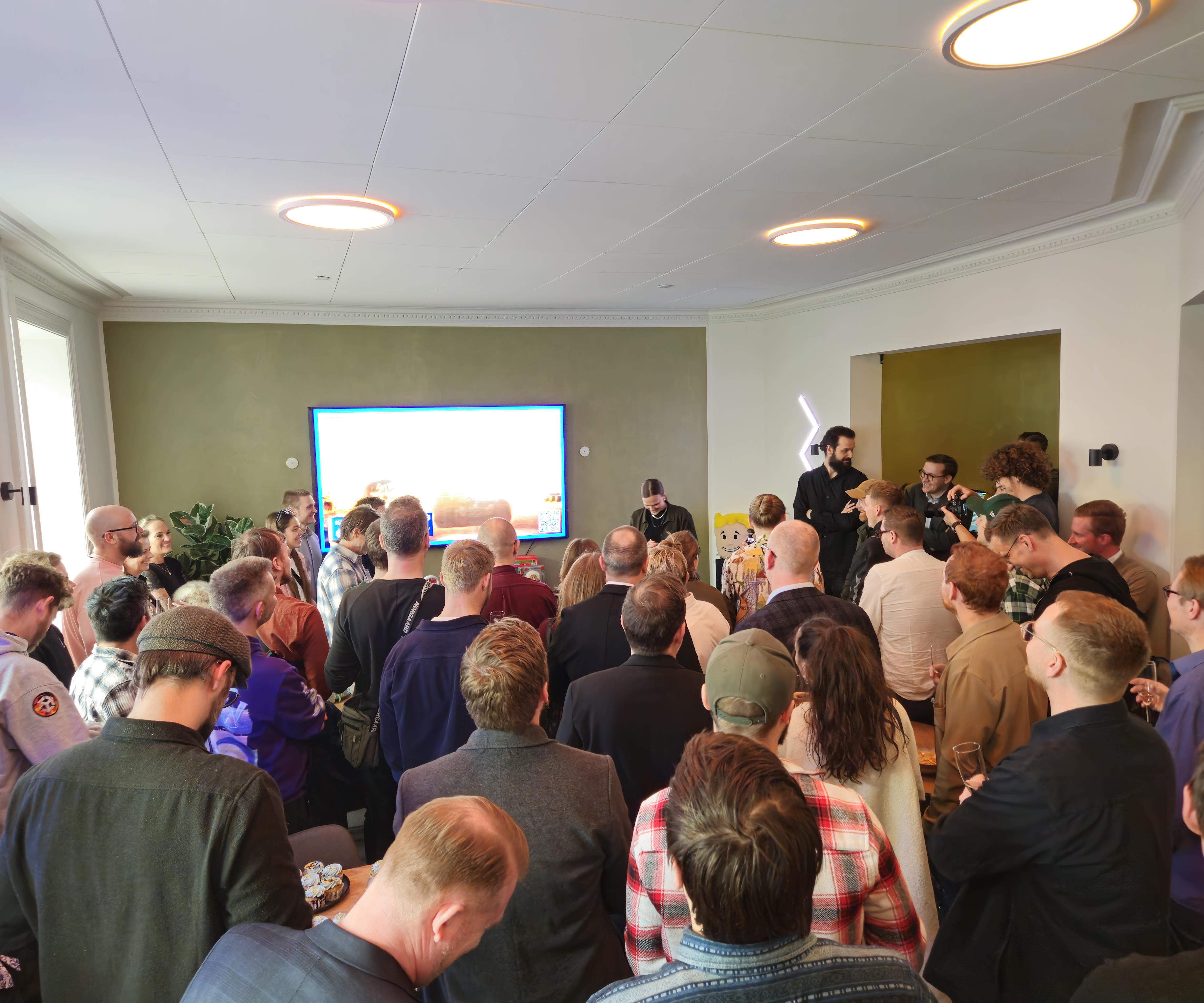
The Speech in Danish
Det er svært at kvantificere skærmtid i sig selv. Der er noget skærmtid, der er god skærmtid og der er noget skærmtid, som er lorte skærmtid. Det er noget som jeg har snakket rigtig meget om i mine første måneder som minister derfor er jeg også glad for at kunne komme herud og snakke om skærmtid, som er noget lidt bedre skærmtid.
Det er jo noget lidt andet det her end da jeg var barn og gå i FONA og købe det næste computerspil, som man kunne tage med hjem og spille, hvis vi tager en tur tilbage til 90'erne, jeg er fra 1990, eller til start 00'erne, der vil man helt sikkert kunne finde den der helt gamle tradtionelle PC. Den findes jo heldigvis stadigvæk i mange gamerhjem. Det gør den i mit, hos min bonus søn. Men dengang så ville man tage sit helt nye fede købte spil fra FONA, så ville man sætte sig ind i kontorstolen foran skærmen og med et magisk klik på den her stationære computer så ville man få Windows tegnet frem, man ville få CD-ROM drevet ud og spillet ville blive indsat og så var man klar. Nogle af delene findes stadig med de fleste spil, tror jeg, det gør min bonussøns ihvertfald. Kommer online og bliver downloadet og ikke igennem en CD-ROM mere.
Det var dengang, hvor der også var en lidt mere naturlig begrænsning på, hvornår man kunne spille computerspil, hvor meget. Det var svært at spille når man gik ud og væk fra sin stationære computer, det var også svært hvis man er helt tilbage i modemets tid, at få lov til at spille i for lang tid fordi så tog man telefonlinjen fra sine forældre og så var der dårlig stemning. Så kom gameboyen, sådan en havde jeg også, sådan en har jeg faktisk stadigvæk derhjemme, den gammeldags, så kunne man spille alle steder, mega fedt.
Gameboy er idag skiftet ud med smartphones, iPads, som indeholder ubegrænsede mængder af gode og dårlige spil, som vi kan spille overalt. Jeg tror vi er mange, der har fordybet os i spil også på iPhone, jeg har, jeg har endda været meget direkte omkring det i Politikken. Jeg har spillet sindsygt meget f.eks. Subway Surfers, genialt spil synes jeg. Jeg har også spillet vanvittigt meget CandyCrush. Og det gik lidt mere galt. Det vil jeg ikke kalde for et godt spil, det tog overhånd. Men det kan noget godt. Og det kan noget skidt.
For med den teknologiske udvikling vi har været igennem der er vores skærmforbrug, vores skærmtid også steget markant. Og måske også, ihvertfald i nogen sammenhænge, lidt mere end, hvad vi kunne ønske. Særligt bruger børn og unge enormt meget tid på skærmen, og derfor er det også vigtigt at vi har fokus på, hvad det er de udsættes for når de er på skærmen. For som vi startede med at sige; alt skærmtid er ikke nødvendigvis dårlig skærmtid. Der er nogen undersøgelser, der viser at øget skærmforbrug kan have negative konsekvenser, der er andre undersøgelser der viser det ikke handler om skærmforbruget, men det handler om, hvad man ser. I en af de seneste undersøgelser jeg har set peges der på at 31% af teenage piger viser tegn på afhængighed i forhold til, hvad de ser på sociale medier.
Så derfor tror jeg vi bliver nødt til, lige nu har vi en meget, sort-hvid debat om det, skærm eller ikke skærm, og det har jeg jo i høj grad også selv været bidrag til, hvis man nu skal være ærlig og det skal jeg. Jeg håber også vi kan have en snak omkring, hvad er god skærm, hvad er dårlig skærm. Det er også her i blandt andet kommer ind i billedet. Vi skylder vores børn og unge et digital liv, hvor de har et frit valg til at vælge. Hvor de ikke er styret af skærmen, men hvor de også kan være styret af lysten til at lege, til at lære. Og selvom det er lettest at sige det er forældrenes ansvar at sørge for det så er det selvfølgelig ikke rigtigt, det er også et forældre ansvar, men det er også politisk ansvar. Det er et udvikleransvar, det er et tekgigantansvar. I har altså ansvar for at udvikle spil med udgangspunkt i ansvarlighed, etisk ansvarlighed og med børnene i mængde, deres mentale trivsel, og vi har selvfølgelig også en ansvarlighed i forhold til barnets trivsel.
Jeg elsker selv og spille. Jeg har ikke så meget tid til det, som jeg havde før og jeg synes det er vigtigt at spil og digitale platforme de understøtter leg, understøtter nysgerrighed. I Danmark har vi en god tradition for ikke bare at udvikle spil, men også udvikle spil, hvor børn kan lærer, børn kan lege. Tilbage i 90'erne, nu er jeg tilbage til mig igen, der havde vi Pixeline spillet, mega fedt, i dag har vi What the Bat? for eksempel, der invitere børn i alle aldre til leg. Vi skal have spil, som beriger os med historier og med inspirerende karaktere. På den måde der bliver den næste generation forhåbenligt også nysgerrig på alle de her fantastiske muligheder, der ligger inden for digitalisering og håber at folk også vil digitalisering i fremtiden så jeg ikke gør mig selv arbejdsløs. I viser, hvordan spiludvikling det kan fungere, som en digital legeplads. Blandt andet ihvertfald. I viser også, hvordan man kan få et digital frikvarter. Men det er også okay så længe der er en balance. Og i viser også i nogen af jeres spil, hvordan at vores børn kan gå fra forbrugere til faktisk at være skabere i spil. Også en sindsyg vigtig læring. Det har vi brug for.
Vi har brug for at få skabt en endnu bedre digital verden sammen så vores børn og unge skal være med til at udvikle. Og måske får de også lyst til at lave til den næste generations spil, som i har været med til at lave nogle af. Afslutningsvis kan jeg sige at spilindustrien jo er i vækst. Det er vi jo glade for. Den danske spilindustri er også i vækst. I dag, så vidt jeg kan forstå, er den større end både film- og musikindustrien. Fedt!
I har potentialet til at blive en kulturel magtfakta på den danske scene, men også på den internationale scene. I har allerede haft eksportsuccesser, store af dem, Hitman, Subway Surfers, LIMBO, spil i verdensklasse, som alle mulige andre end danskere også bruger. Og vi skal have endnu flere danske spil, hvis det står til mig, som kan berige gamere og helt normale børn og unge i alle aldre og voksne med smukke inspirerende og lærige spil.
Tusind tak til alle jer for at give plads til den danske spilindustri. Kæmpestort tillykke med de her nye lokaler, jeg glæder mig rigtig meget til at prøve nogle af alle de her spil i har snakket om og til at hilse på jer allesammen lige om lidt så, tusind tak fordi jeg måtte komme!